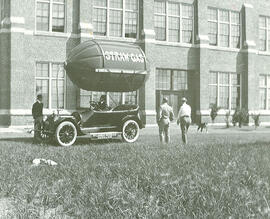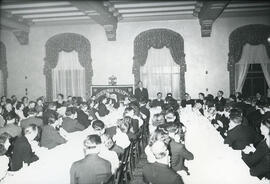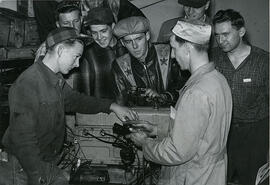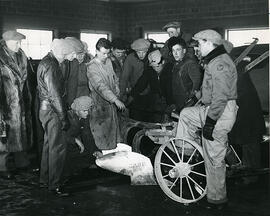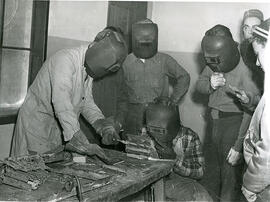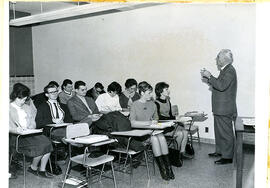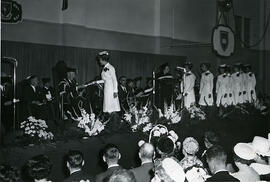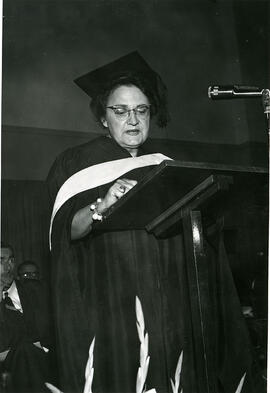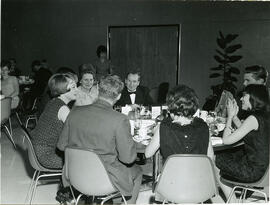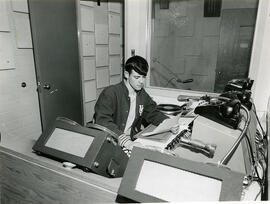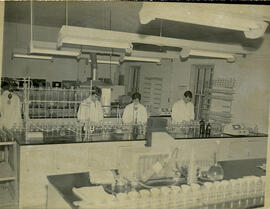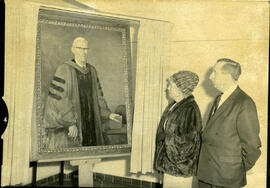- A-3766
- Item
- [between 1915 and 1920]
[R.D. MacLaurin] standing (left) in front of a vehicle with a large tank attached on top which reads "Straw Gas"; [F.H. Edmunds] sitting inside. Two unidentified men walking away at right. Sign on running board reads: "McLaughlin Motor Car Model D45". Engineering Building in background.
Bio/Historical Note: Prof. R.D. MacLaurin, head, Department of Chemistry, was interested in the production of gas from straw as a fuel for heating and for engines. Though he was not alone in the research field, MacLaurin built a small extraction plant in the late 1910s and operate a McLaughlin Motor Car using straw gas. The research was promising but far from a breakthrough. The volume of gas produced was small and the mileage between fill-ups low. The most significant aspect of the research was not scientific but financial. MacLaurin felt cheated when Walter C. Murray, University President, distributed provincial research funds to several campus projects. Though he had the largest share of the grant, MacLaurin felt he deserved it all. He alleged Murray had misappropriated funds. A battle ensued for the control of the University administration. Murray was able to maintain the confidence of the Board of Governors and MacLaurin and three of his supporters - Samuel Greenway, Extension director; Ira MacKay, professor of Law; and John L. Hogg, head, Physics - were dismissed. Research into straw gas was discontinued.



